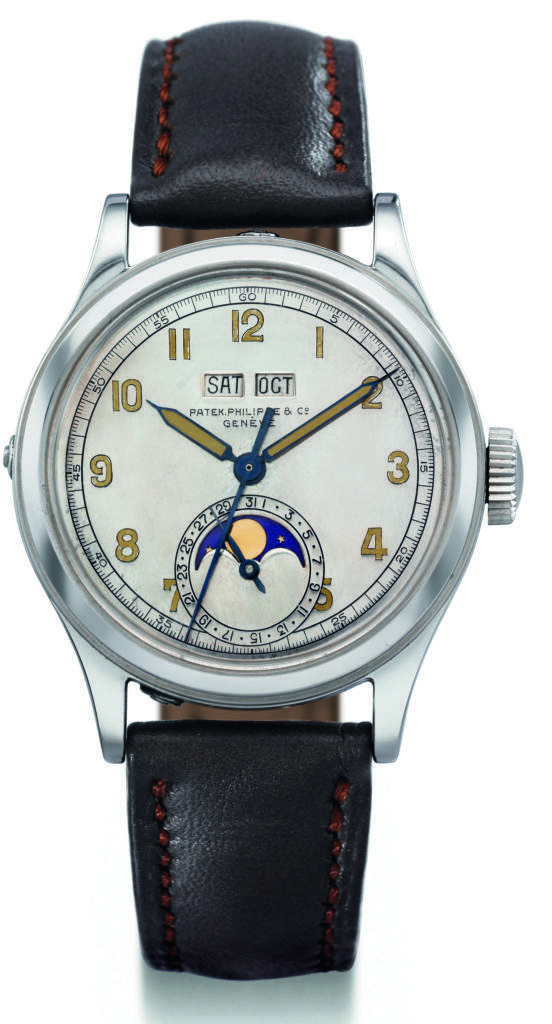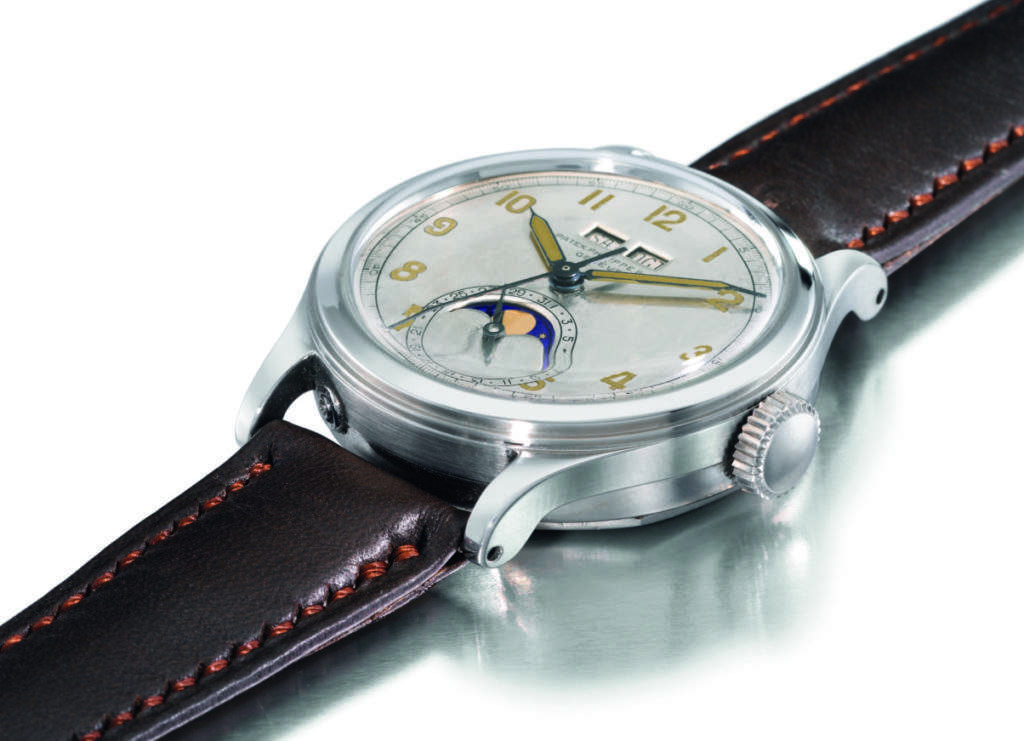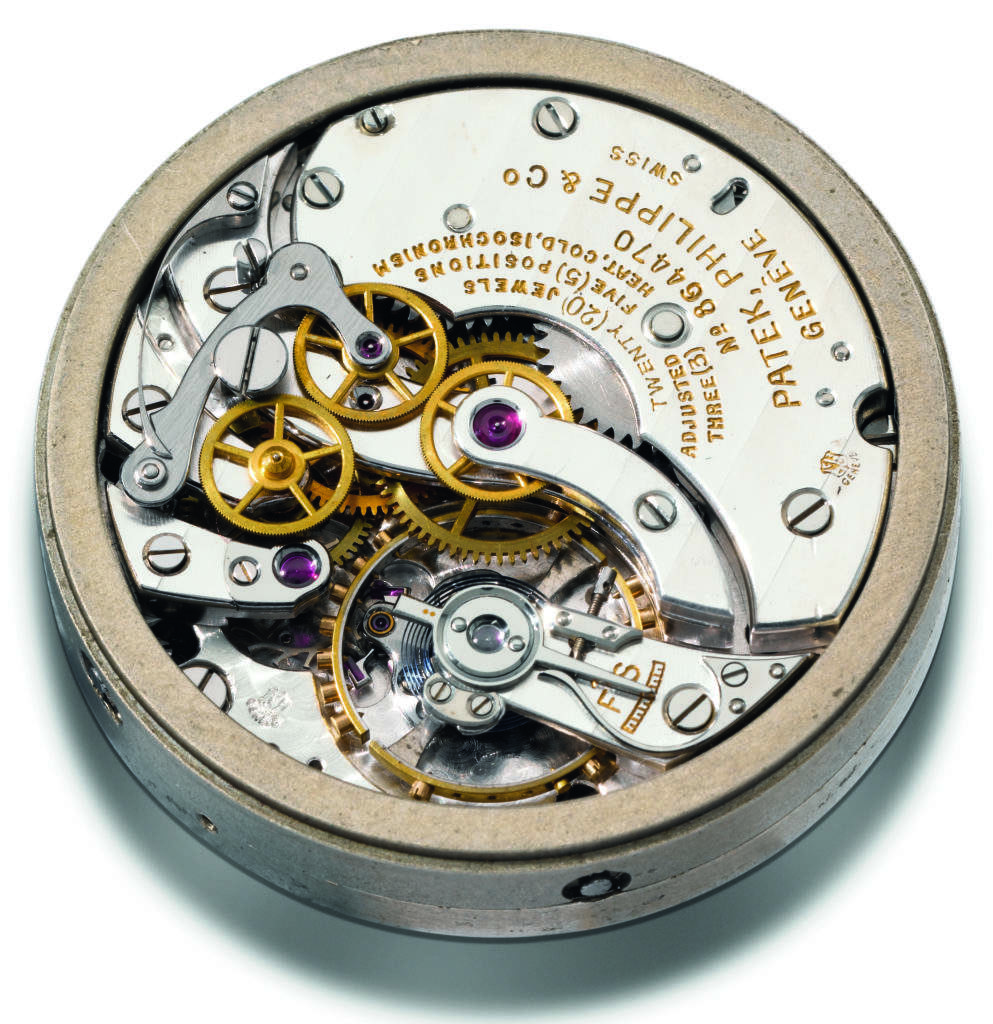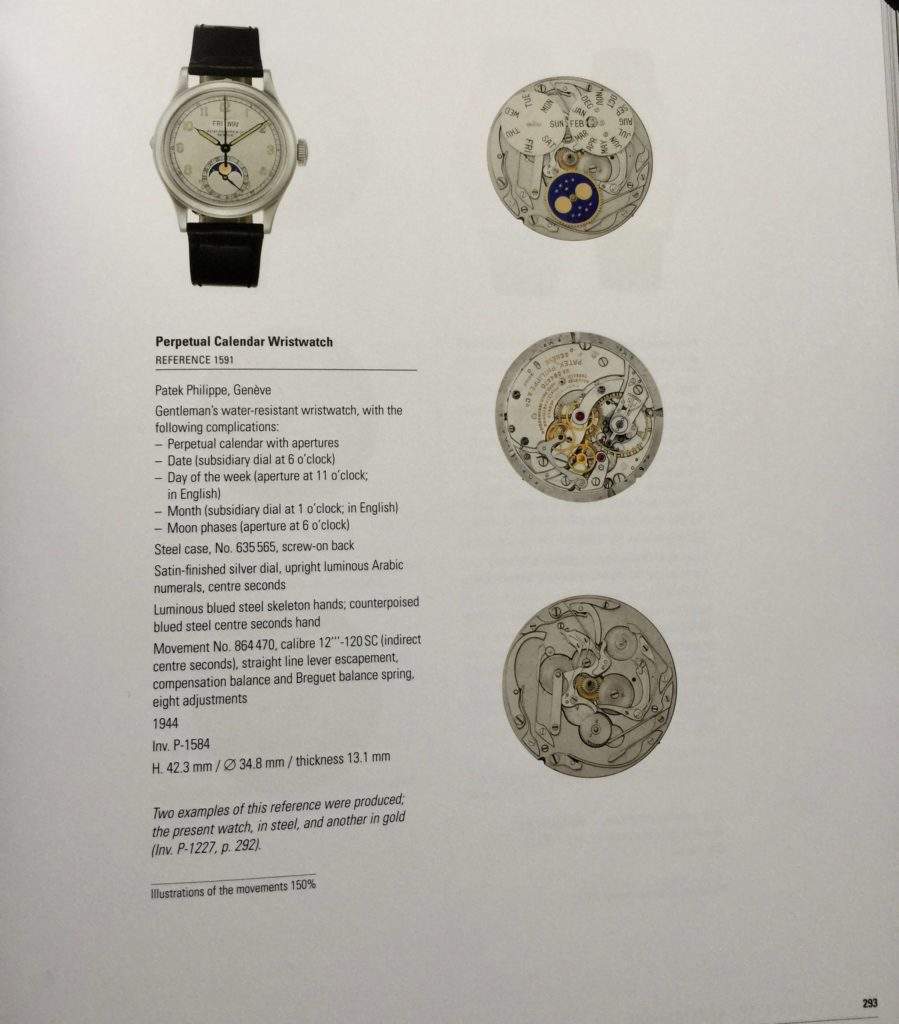Past Auction Killer Patek 1591: First waterproof perpetual calendar
Fine WatchesCollector's InsightLike some PAK watches before, I sometimes stumble on them by pure accident. Such was the case with this watch.
When I read ‘water resistant perpetual calendar‘ in the catalogue – I thought the auction house must have printed a mistake. I was not aware of any perpetual calendar that was waterproof, especially not in the 1940s. I knew that the first water-resistant chronograph from Patek was the ref 1463* and yes that was introduced in the 1940s but a perpetual calendar that was water resistant? That seemed odd to me. Then I saw it was in steel, and I knew that I was onto something quite special.
*(Credit: Christies).
A 1944 Patek Ref 1591 Perpetual calendar in steel.
For many collectors buying vintage steel Patek’s is the end game in collecting. Especially if they carry a complication.
The most well-known complicated steel watch must be the steel 1518, Pateks legendary perpetual calendar and chronograph that was made in only four pieces and was sold in 2016 for $11m and still today remains the second most expensive wristwatch ever sold (the record for a watch in general belongs to a pocket watch). You could argue that in many ways the second most important steel watch Patek ever made was this watch here:
The Ref 1591: Made in 1944, this is among the very first perpetual calendars ever made and has a fascinating history.
Completely unknown to world watch literature and the market, it first turned up in 1996 at auction. Originally owned by a Maharaja, it was apparently then given to the man who organised the Maharaja’s wedding (imagine the wealth of the Maharaja’s at the time). The fact that the watch was sold via Favre Leuba supports the story that the watch was sold to India, Favre Leuba was Patek Philippe’s Agent in India at the time.

The case of this watch is interesting.
Christies lot notes – at the time of sale – states that the case resembles the 1463, the first waterproof Chronograph from Patek. While I see that in terms of the profile of the lugs (see picture below), I also see something else.
Looking at the watch straight on (like the picture above) I see the ref 565 – a sports Calatrava watch that Patek introduced in the 1930s for outdoors activities. Notice the crown and how similar it resembles that Ref 565. The watch you are looking at is the first perpetual calendar that is indeed waterproof. The case is a screw back type ensuring water resistance. Additionally, when you open the case back, the movement is protected by a soft iron cap, to shield the watch from magnetic influences.

This watch my friends, no matter how elegant, was designed to be robust and used outdoors.
Further evidence that this Patek is meant to be used outdoors can be seen on the dial. This watch was confirmed by the archives and was born with a luminous dial and carries luminous hour numbers and luminous hands. Perfect for helping the owner to tell time in the dark. Notice also the long signature Patek Philippe & Co – correct given the watch was made in the early 1940s.
A short comment on the movement: According to the lot notes at the time of sale, the movement (see picture below) is based on Victorin Piguet 12 SC, custom made for this watch. Again, this movement is a sophisticated centre seconds, perpetual calendar from Patek. It is important to remember that this watch was way ahead of its time. It would take Patek almost another decade to introduce a perpetual calendar in series, the 1526.

There are indeed many reasons why this is a PAK watch. Let me go through them with you
- There are only two 1591 ever made and this is on the only one in steel (the other is in gold).
- Unique case, dial with luminous and waterproof case in 1944 make this perpetual calendar way ahead of its time.
- A steel perpetual calendar with screw back case made during the war – this is a UNICORN Patek.
This watch sold at Christies in 2007 for CHF 2.5m against an estimate of CHF 800 -1.4m. It was one of the most expensive wristwatches ever sold at auction at that time.
NB: Of course the buyer at the time was unknown. But I suspected that maybe the Patek museum would have secured this trophy watch for themselves, and indeed they did. Below is confirmation that this watch now sits in the Patek Museum. Who else but Patek themselves, to recognise a trophy watch that they want to own in perpetuity and share with the world in their own museum.

